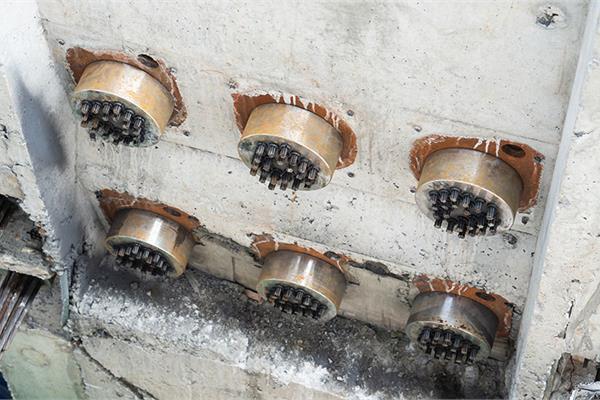
Cortec Corporation has launched a new version without silica of its MCI-309 migrating corrosion inhibitor for protection of metals within an enclosed space, such as PT tendons.
To offer an effective and easy-to-apply solution to protect metal surfaces from corrosion, Cortec® Corporation has launched MCI®-309, a powder-based Migrating Corrosion InhibitorTM, which can protect ferrous and aluminum metals located in recessed areas, interior cavities, and structural voids.
How MCI®-309 works
MCI®-309 is an efficient dry method of protecting metals within an enclosed space.
Upon application of the MCI®-309 powder in the void, it vaporizes and forms a molecular layer of corrosion inhibitors on the metal surface. If this layer is ever compromised (for example, by moisture or by opening the enclosed space), it will be automatically replenished by new vapour being continuously released from the powder carrier.
MCI®-309 is considered ambiodic (mixed), meaning it protects both anodic and cathodic corrosion sites of the metal. It does not contain silica, silicates, phosphates, nitrites, or heavy metals.
Fields of application and advantages of MCI®-309
MCI®-309 can be applied into a variety of
tubular structures, pipes, and vessels where inaccessible or recessed metal surfaces are at risk for corrosion but are otherwise difficult to reach.
This is why MCI®-309 finds
wide application in the construction industry, both onsite and offsite, in which projects, especially large ones, may take several years to complete.
For example, for structures that use post-tensioning, grouting is a step that is often postponed due to cold weather, transit of precast segments, or other project delays. During this time, PT tendons installed in PT ducts are at risk of corrosion, especially in harsh environment such as those of extreme moisture, chlorides, or high temperatures.
MCI®-309 by Cortec, makes it possible to protect these tendons in such hard-to-reach areas, offering an easy and cost-effective corrosion protection method, which requires little to no surface preparation and can be applied by dusting, fogging, or sprinkling. Removal is not required prior to concrete or grout placement, even though it is possible to carry it out with air guns and water. This offers an additional advantage over oily or grease-based corrosion inhibitors that need to be cleaned off before grouting.
MCI®-309 does not affect physical properties of concrete and grout (set time, strengths, etc.). Testing has also confirmed that the product does not affect strand pull-out strength compared to a control.
Real life application: where MCI®-309 has been used
Several recent bridge projects exemplify the use of MCI®-309 for PT strand protection at various stages of construction.
In the U.S., a new extradosed bridge crossing the St. Croix River Valley from Minnesota to Wisconsin opened in 2017 to improve traffic flow in the area. The bridge took several years to complete and made use of MCI®-309 to protect post-tension strands that could not be immediately grouted after being placed in the structure. U.S. state and federal requirements usually call for use of a corrosion inhibitor if the delay is longer than 14 days, and MCI®-309 provided an efficient means to do so.
MCI®-309 has also been used for important new bridges in Europe. For example, a 5-mile (8 km) bridge being constructed in Denmark in 2018 was made of segments precast in Poland. MCI®-309 was applied at the casting site to protect the PT cables according to design requirements until the segments could be grouted, which was not until 30 days after arriving at the final construction site.